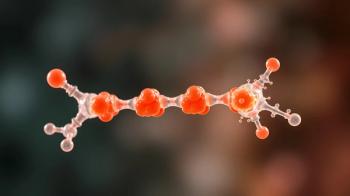
New Treatment Could Reverse Brain Damage from Stroke
Mice treated with stem cells and 3K3A-APC had increased motor and sensory function.
A recent study found that stem cell therapy could potentially increase nerve cell production in mice that have brain damage resulting from a stroke.
Researchers used a combination of 2 methods.
For the first, they surgically grafted human neural stem cells onto the damaged parts of the brain, and the stem cells then matured into neurons and brain cells. For the second method, they used a compound called 3K3A-APC, since it can help stem cells grown in vitro grow into neurons.
Researchers were unsure how APC (activated protein-C) would affect live animals. They discovered mice that received both treatments had higher motor and sensory function compared with mice receiving 1 or none of the treatments.
Mice that were treated with 3K3A-APC had additional stem cells survive and mature into neurons than mice that did not receive that treatment, according to the study.
“When you give these mice 3K3A-APC, it works much better than stem cells alone,” said lead researcher Berislav Zlokovic, MD, PhD. “We showed that 3K3A-APC helps the cells convert into neurons and make structural and functional connections with the host's nervous system.”
Researchers also found that mice receiving both treatments had more synapses in the treated areas, compared with mice given a placebo. Treated mice also had a greater neuronal response to vibrations in their paws.
“That means the transplanted cells are being functionally integrated into the host's brain after treatment with 3K3A-APC,” Dr Zlokovic said. “No one in the stroke field has ever shown this, so I believe this is going to be the gold standard for future studies.”
The researchers said they plan to conduct a clinical trial to determine whether their findings translate to humans. If successful, the treatments could also treat other conditions, such as spinal cord injuries, the study concluded.
Newsletter
Stay informed on drug updates, treatment guidelines, and pharmacy practice trends—subscribe to Pharmacy Times for weekly clinical insights.


















































































































































































































